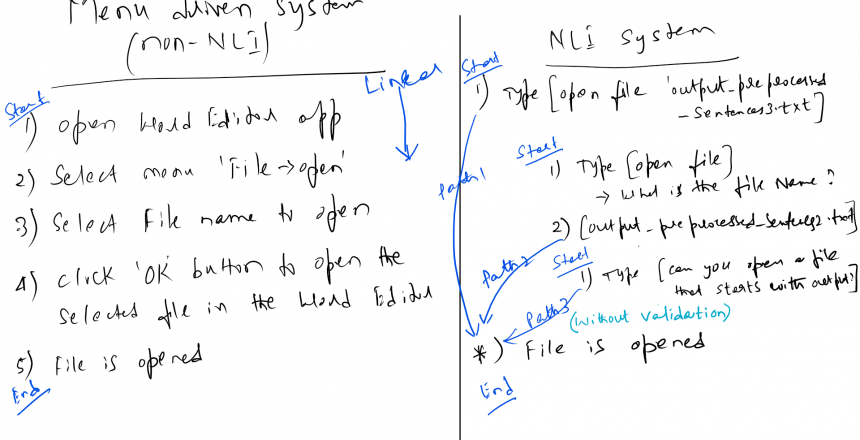Natural Language Interface: Advantages & Dis-Advantages
This post is the first of a three part series on NLI (Natural Language Interface). The other two posts in the offing are: Types of applications which are implementing NLI and Tools/ Technologies that are used to build NLIs.
Natural language is one of many ‘interface styles’ that can be used in the dialog between a human user and a computer. There is a significant appeal in being able to address a machine and direct it’s operations by using the same language we use in everyday human to human interaction*.
Advantages of Natural Language Interface **:
- Easy to learn and easy to remember, because it’s structure and vocabulary are already familiar to the user
- People need little training to use it in interfacing with a computer system
- It allows considerable flexibility in executing the steps of a task
- For many applications, the use of natural language in NLI is faster than using a menu system, composing formal queries, or writing computer programs
- Natural languages allow follow-up questions to build on the linguistic context established by previous dialogue
- The automatic-programming aspect of many Natural Language Interface systems is a key benefit of the interface technology, in that it provides a means for reducing the high labor cost of using humans to program computer algorithms.
Disadvantages of Natural Language Interface **:
- Users can easily pose questions or give commands that are beyond the ability of the system to interpret. This is in contrast with a menu driven system, in which the system is always in control of the conversation – as it constrains the user to select from a limited number of choices.
- Flexibility of an NLI could also be considered a dis-advantage. For example, in an application that implements NLI (Natural Language Interface) to access database of information, users will tend to believe that it can deduce other facts from that information. This is not necessarily true, even after explicitly coding with external data. Say, for instance, a user may query a Sales database using the words “What are the sales in the month of May?“. If the sales are down compared to previous months, it is natural for the user to ask a follow-up question using the words “Why have the sales dropped?“.
Using the example of opening a file in a text editor, the featured graphic above attempts to further explain the above points by comparing a non-NLI with an NLI implementation.
In the next post, we’ll build an application that implements NLI using the above example.
* Byron Long, Dynamic Graphics Project, Department of Computer Science, University of Toronto
** Gary G. Hendrix, Natural-Language Interface, Chairperson, SRI International , Menlo Park, CA

